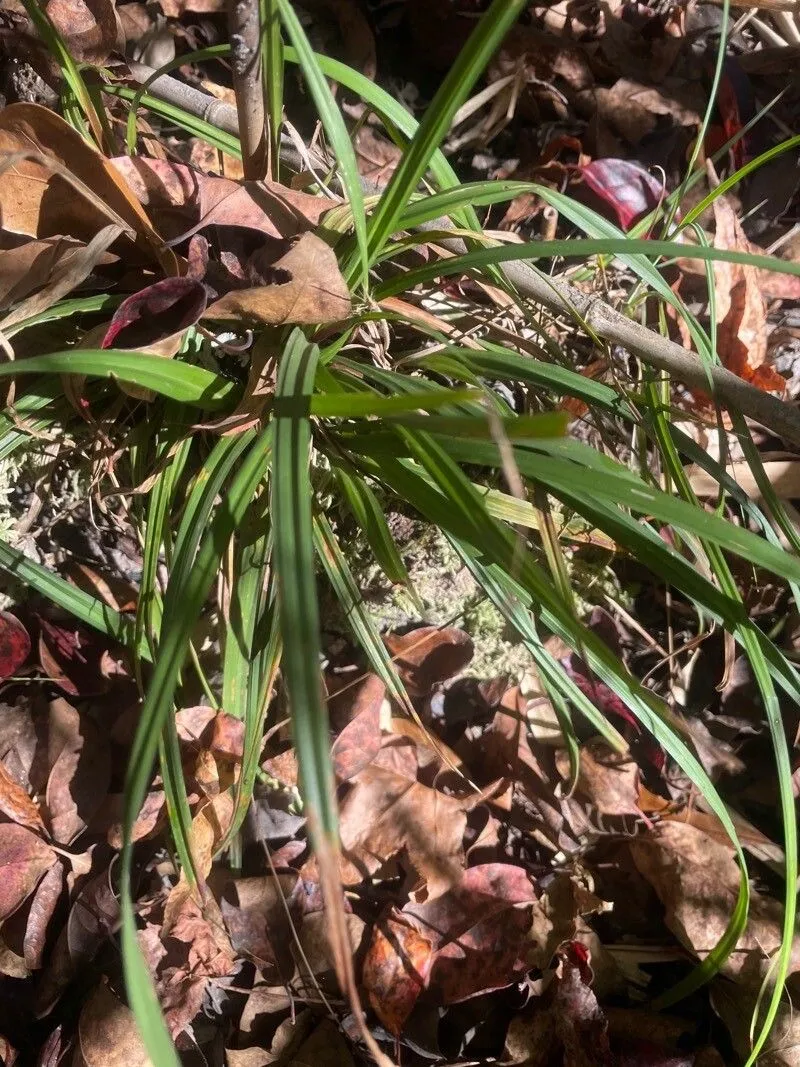
Author: Muhl. ex Willd.
Bibliography: Sp. Pl. ed. 4. 4: 222 (1805)
Year: 1805
Status: accepted
Rank: species
Genus: Carex
Vegetable: Unknown
Observations: Canada to NC. & E. U.S.A.
The plant commonly known as Longstalk sedge, scientifically referred to as Carex pedunculata, belongs to the Cyperaceae family. Described authoritatively by the botanists Muhl. and Willd., this species was formally detailed in the fourth edition of “Species Plantarum” on page 222 in the year 1805.
Longstalk sedge is native to North America, particularly widespread from Canada down through North Carolina, as well as the eastern regions of the United States. This perennial plant thrives in varied habitats, frequently found in moist, shaded woodlands and rich forest floors.
Characterized by its long, slender stalks, Carex pedunculata is a distinctive sedge distinguished from other members of its genus by several unique features. Its foliage comprises narrow, grass-like leaves that emanate from the base, forming dense clumps. The inflorescences are borne on elongated peduncles, a key trait that lends the plant its common name. These flower stalks can often be seen standing above the foliage, providing an elegant aspect to its overall growth habit.
The ecological role of Longstalk sedge is significant in natural habitats where it contributes to soil stabilization and provides cover and food for wildlife. In cultivated landscapes, it might be used in naturalistic planting schemes, enhancing biodiversity and adding texture to garden compositions.
Given its broad geographic range, Carex pedunculata showcases a remarkable resilience and adaptability to different environmental conditions across North America. Exploration and study of this species not only deepen our understanding of regional flora but also underscore the importance of preserving such native plants for their ecological value.
Eng: longstalk sedge, long-stalked sedge, peduncled sedge, pedunculate sedge, stalked sedge
Fra: carex pédonculé
En: Longstalk sedge, Long-Stalk Sedge, Pedunculate sedge, Long-stalked sedge, Peduncled sedge, Stalked sedge
Fr: Carex pédonculé
Taken Jun 13, 2020 by lahuen y pablo (cc-by-sa)
Taken Apr 20, 2020 by karen thorsell (cc-by-sa)
Taken Oct 26, 2022 by Tad Guidry (cc-by-sa)
Taken Nov 6, 2022 by amber becker (cc-by-sa)
Taken Oct 26, 2022 by Tad Guidry (cc-by-sa)
Taken Jun 5, 2015 by EOL − Charlie Hohn (cc-by-nc)
Taken Jun 17, 2015 by EOL − benconnorbarrie (cc-by-nc)
Taken Jul 3, 2015 by EOL − Liana May (cc-by-nc-sa)
Taken Jul 8, 2015 by EOL − Liana May (cc-by-nc-sa)
Taken Aug 1, 2015 by EOL − cmclauchlan (cc-by-nc)
Family: Myrtaceae Author: (F.Muell.) K.D.Hill & L.A.S.Johnson Bibliography: Telopea 6: 402 (1995) Year: 1995 Status:…
Family: Rubiaceae Author: Pierre ex A.Froehner Bibliography: Notizbl. Bot. Gart. Berlin-Dahlem 1: 237 (1897) Year:…
Family: Sapindaceae Author: Koidz. Bibliography: J. Coll. Sci. Imp. Univ. Tokyo 32(1): 38 (1911) Year:…
Family: Asteraceae Author: A.Gray Bibliography: Pacif. Railr. Rep.: 107 (1857) Year: 1857 Status: accepted Rank:…
Family: Fabaceae Author: Medik. Bibliography: Vorles. Churpfälz. Phys.-Ökon. Ges. 2: 398 (1787) Year: 1787 Status:…
Family: Aspleniaceae Author: (Cav.) Alston Bibliography: Bull. Misc. Inform. Kew 1932: 309 (1932) Year: 1932…